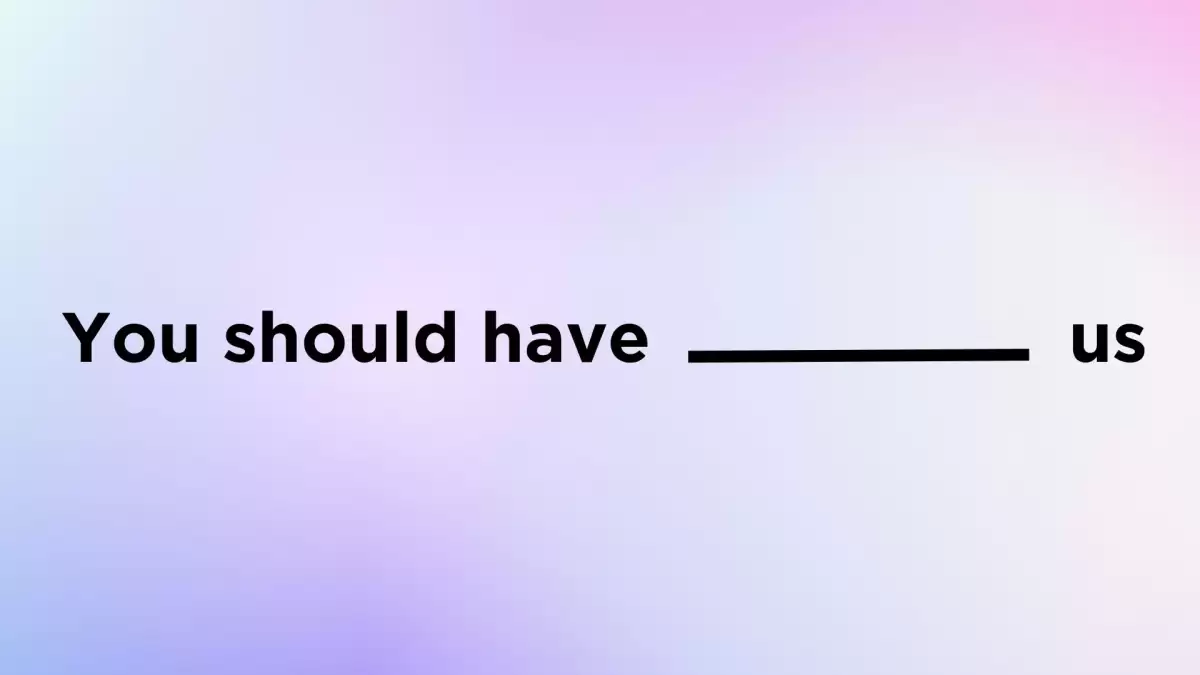Can you answer all five grammar questions in this puzzle?
Explore the world of grammar puzzles. These puzzles get you thinking about grammar and creative problem solving. They keep your mind active and help reduce stress. You can enjoy different grammar challenges, including the one that follows. This challenge is a little tricky and is for those who are really good at grammar and notice the little things. When you get good at this type of puzzle, it’s not just about having fun, it also gives you skills that can be helpful in many aspects of your life. Although the puzzle may seem difficult at first, your goal is to find a solution that completely follows the rules of grammar and reveals the secrets of the puzzle. The next section explains this syntax dilemma in detail and shows you how to solve it.
- Observation Brain Test: If You Have Eagle Eyes Find the Difference Between Two Images With 20 Seconds?
- Brain Teaser Observation Test: Can You Spot The Mistake In This Office Room Picture In 20 Seconds?
- Brain Teaser: Are you a genius? Prove with this maths puzzle
- Brain Teaser: If 4=5, 5=3, 6=3, then 7=? Viral Math Puzzle
- Brain Teaser: If you have Sharp Eyes Find the word Debit among Debut in 20 Secs
1. You should have ____ us
You are watching: Can You Answer All Five Grammar Questions in This Puzzle?
The word “tell” is used in the sentence “You should tell us” because it represents the past participle form of the verb “told”. This sentence is structured in the past perfect tense, which is used to describe an action in the past that was expected to happen but did not. In this case, it means that someone was expected to communicate or share information with “us” in the past, but that didn’t happen. Simply put, it means “You should have let us know something earlier, but you didn’t do it.” The usage of “tell” conforms to the grammatical rules of the past perfect tense, indicating that an action should have been completed in the past, but was not completed.

2.She has never learned ____
The phrase “to drive” is used in the sentence “She never learned to drive” because it represents the infinitive form of the verb “drive”. In this case, it means that the person “she” has not acquired the skills or knowledge to operate the vehicle. The verb “learned” expresses the past tense and when used with the infinitive “to drive” it indicates that she never acquired the ability to drive in the past. The use of “driving” in this sentence follows grammatical rules for expressing past actions or experiences.

3.I can’t find it____
The word “anywhere” is used in the sentence “I couldn’t find it anywhere” to express that the speaker searched every possible location but still could not find the item they were looking for. Simply put, this sentence means “I looked for it everywhere I could think of, but I couldn’t find it.” “Anywhere” emphasizes the wide range of places searched and conveys the idea that the speaker All available options have been thoroughly explored in the search for items.

4.He ____ up
The word “standing” in the sentence “He stood up” is used to indicate that someone is in a sitting or lying position and then transitions to an upright or standing position. Grammatically, “stood” is the past tense form of the verb “stand.” It means that this standing action happened in the past, and the word “up” adds clarity by specifying the direction of movement (from a lower position to a vertical position). “Stood” is used to describe the action of standing. It is in the past tense, indicating that standing occurred at a certain moment in the past.

See more : Brain Teaser: Equate 1-2+3×4+0
5. He ____ to school every day
The word “go” in the sentence “He goes to school every day” is used to describe someone’s routine or habit of going to school every day. Grammatically, “goes” is the present tense form of the verb “go.” It shows that this action is something that happens regularly now. In this case, it conveys that “he” insists on going to school every day, indicating an ongoing, habitual behavior. “Goes” tells us that this is part of his daily routine and is happening right now.

Calculate the sum of 360 ÷ 12 + 7 x 3 – 63 ÷ 7=?
To solve this calculation, use order of operations. Division and multiplication proceed from left to right: 360 ÷ 12 equals 30, and 63 ÷ 7 equals 9. The equation becomes 30 + 7 x 3 – 9. Now, multiplication and addition/subtraction from left to right: 7 x 3 equals 21, and 30 + 21 equals 51. Therefore, the solution is 51.
Relax and sharpen your mind with NEWSTARS Education. We offer engaging challenges and brainteasers that not only provide a break but also improve your concentration, creativity and problem-solving skills.
trend
Can you calculate 300 ÷ 15 + 6 x 5 – 72 ÷ 6=?
For this problem, apply the order of operations. Division and multiplication proceed from left to right: 300 ÷ 15 equals 20, and 72 ÷ 6 equals 12. The equation becomes 20 + 6 x 5 – 12. Next, multiply, add and subtract from left to right: 6 x 5 equals 30, and 20 + 30 equals 50. Therefore, the answer is 50.
Disclaimer: The above information is for general information purposes only. All information on this website is provided in good faith, but we make no representations or warranties, express or implied, as to the accuracy, adequacy, validity, reliability, availability or completeness of any information on this website.
Source: https://truongnguyenbinhkhiem.edu.vn
Category: Brain Teaser
